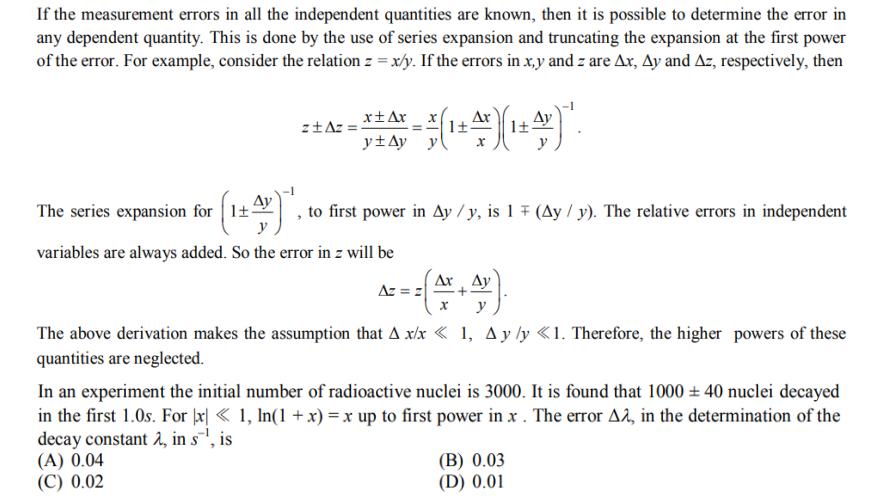Answered step by step
Verified Expert Solution
Question
1 Approved Answer
If the measurement errors in all the independent quantities are known, then it is possible to determine the error in any dependent quantity. This

If the measurement errors in all the independent quantities are known, then it is possible to determine the error in any dependent quantity. This is done by the use of series expansion and truncating the expansion at the first power of the error. For example, consider the relation z = x/y. If the errors in x,y and z are Ax, Ay and Az, respectively, then x Ax Ax Ay JA (14)(1+4)*. - y Ay y z+Az = Ay The series expansion for 1+- ~ (1+ AV) "', to first power in Ay/y, is 1 F (Ay/y). The relative errors in independent variables are always added. So the error in z will be = = = Ar Ay X y The above derivation makes the assumption that A x/x < 1, Ayly 1. Therefore, the higher powers of these quantities are neglected. (A) 0.04 (C) 0.02 In an experiment the initial number of radioactive nuclei is 3000. It is found that 1000 40 nuclei decayed in the first 1.0s. For x < 1, ln(1 + x) = x up to first power in x. The error A2, in the determination of the decay constant 2, in s, is (B) 0.03 (D) 0.01
Step by Step Solution
★★★★★
3.50 Rating (157 Votes )
There are 3 Steps involved in it
Step: 1
The detailed ...
Get Instant Access to Expert-Tailored Solutions
See step-by-step solutions with expert insights and AI powered tools for academic success
Step: 2

Step: 3

Ace Your Homework with AI
Get the answers you need in no time with our AI-driven, step-by-step assistance
Get Started


